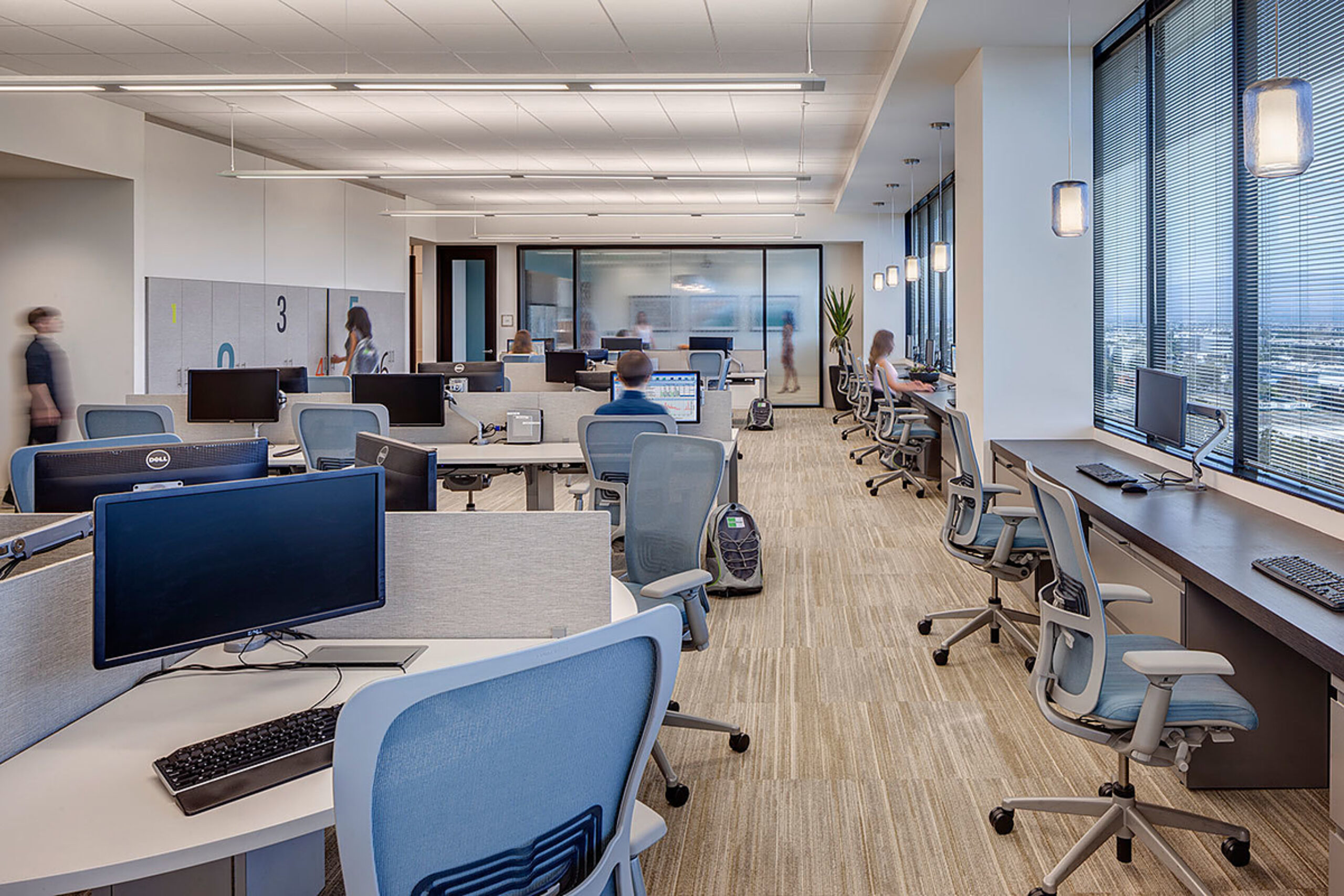Creating an Engaging Office: How Office Space Can Empower Employees and Achieve Business Goals

Collaborative or creative workspace has been a popular trend in the design arena recently, with an increasing number of employers and corporations considering implementing an open office style. The stated benefits of an creative office space, which can include increased access to natural light, and higher employee productivity and retention are attractive to many employers who are seeing the marketplace become increasingly competitive.
For many, the change is a wise decision as the productivity and employee retention gains resulting from a collaborative office space will elevate profits and help your business to achieve its goals more efficiently. However, to enjoy the full benefits of collaborative office space, it is important that the design and implementation of the space are done thoughtfully and specifically for your company and your people. Below are six steps you can take to ensure the success of your collaborative office.
- Start from the top.
The first step in successfully transitioning to a collaborative office space is ensuring that leadership is onboard and excited about the change. Leadership’s support must come in several forms – emotional, financial and behavioral. Be excited. Be willing to commit the necessary resources and time. Be willing to adapt to new behavior and cultural norms.Implementing a collaborative workspace in your office isn’t merely a design change – it’s a cultural one. Either everyone in leadership is onboard, or the effort will suffer. It’s as simple as that. - Study your culture and objectives.
A collaborative office isn’t for everyone or for every company. Take a realistic view of your leadership style; if your style is based on hierarchy, then an open office might not be for you. Companies that deal heavily with sensitive information may also struggle with an open office concept. And, organizations that need to allow for heads down focus time for more than 70 percent of the workday may also find a fully collaborative environment to be a challenge.In making this change, you need to conduct both cultural and process checks to ensure that it can be implemented in a way that will provide value to your employees and organization. Understand why people in your company do what they do – and how they do it.Taking these factors into account when making the move to a collaborative office will help you to design an office that works for your people and helps them to become more efficient and collaborative. - Take care to customize
Collaborative office space is not one size fits all. In fact, it’s not even one size fits most. Office space must be designed specifically for the company and the people who will utilize it. That’s why the cultural and process checks discussed in #2 are so important. Understanding how your company and your people work is integral to designing a space that will change behavior.Take the time to discern how much private space your company needs. For example, if you’re a law firm that conducts lots of confidential client calls, then it would be important to create a larger amount of private phone booths or workrooms. Conversely, you need to find out how much and what types of collaborative space would help your company to succeed. It’s best to understand how your team creatively problem solves so that you can tailor the space accordingly. So, if your team is used to collaborating in small groups, ensure that the space allows for that type of meeting. - Champion the change.
A change as big as moving to a collaborative workspace, especially if your company culture is heavily based in the office hierarchy system, requires serious commitment and cultural change. First, leadership must champion the change, providing the necessary resources and commitment to the new space and processes.To enable you to focus on growing your business, enlisting the help of a change management consultant is becomes a strategic imperative in creating a collaborative workspace that works. This consultant can help to make sure that you’ve developed an appropriate workspace protocol and that people understand how to use the space to achieve the best results. Because you’re adjusting behaviors and not just physical space, you must train, train, train. For example, many employees complain about high noise levels and constant interruptions after the transition to a collaborative space. Educating employees about voice volume levels and how to respect coworkers’ concentration signals can make the collaborative space work positively. By training your employees, you empower them to utilize the space in the way that will be most effective for them – and, ultimately, for the business. - Listen to feedback.
As with any change, there will likely be some growing pains associated with transitioning from a traditional workspace to an activity-based workspace. One of the best ways to ease those growing pains is to listen to feedback from employees and management. By embracing and promoting open dialogue about the space, you will be able to identify elements that need modification or additional trainings that staff may need.Activity-based workspace is not meant to be static, and listening to feedback will help to enable you to fine-tune an environment that works for your business. - Take it seriously.
Moving to an activity-based workspace is not a decision that can be made on a whim or to conform to trends. It is a decision that needs to be made after careful consideration and analysis of your workplace and business objectives. Take the decision and the process seriously.If you’ve already made the leap, it’s important that you aren’t a “fair-weather” champion of the new workspace. Of course, there will likely be bumps in the road. Offering your full support and reminders about the benefits of the open office, especially during rough patches, will help to guide the staff through growing pains and help the workspace and culture to evolve.